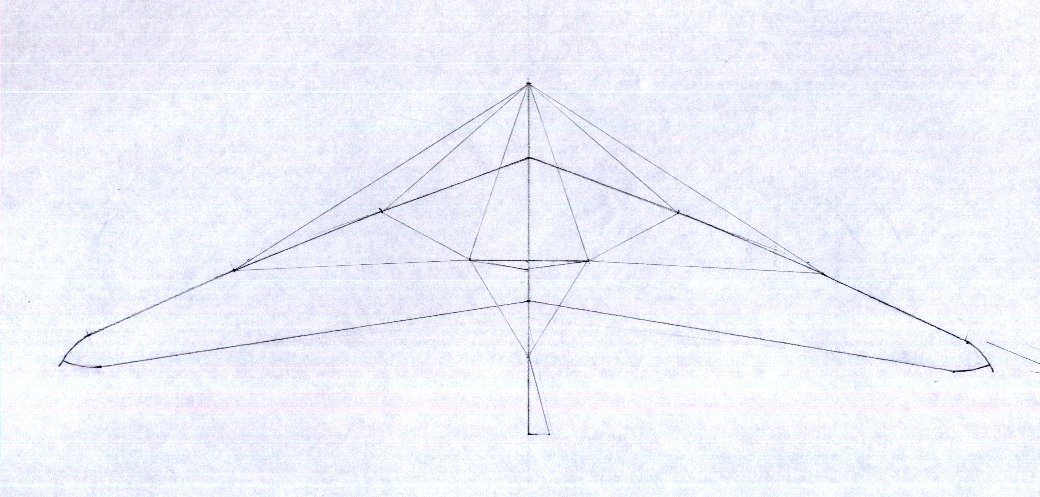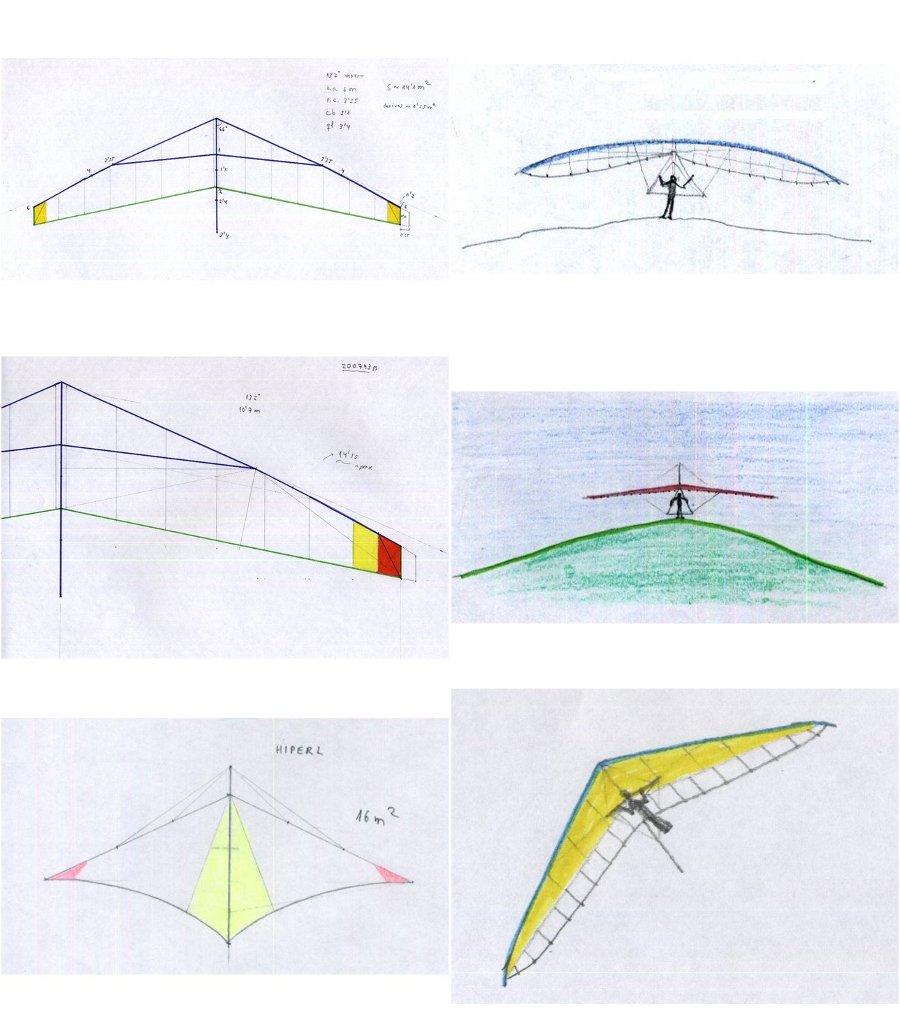
[en] [fr] [ru]
THE ART AND SCIENCE OF HANG GLIDER DESIGN
1. Introduction (here)
2. Hang glider programming LEHG-0.2 (based on Fortran and OpenSCAD)
3. Some mechanical ideas on hang glider structure (drawings october 2020)
4. Methods for sail patterns
5. Some projects
6. Materials (tubes, bolts, sails, wires)
7. HG single surface airfoils
8. HG planforms
9. HGG Hang glider generator. Bash script to draw planforms.
10. Artistical and technical HG/PG photoalbum (1988-1997)
11. Such were the Laboratori studies in the 70's (1976-1978) :)
12. Zephir
1. INTRODUCTION
My passion for free flight
began when paragliding was still not known (or at least had not developed). In 1982, when I was still a child, I built my first hang
glider, from reeds, and PVC plastic for agricultural use. Luckily, it broke on the first attempt at flight from a
height of 2 m, and nothing happened. The year 1988 I discover the
paragliding, and the following year I took a flying course. I've
always found paragliding a great idea, there is nothing better to fly
easy, safely, far away, and autonomously, and I have done
fantastic paragliding flights. However,
my thoughts turn constantly to hanggliders, perhaps because I belong
to a generation slightly later than that of the pioneers of the 70s'.
Some thought (including me!) that hang gliding
would die soon. But the reality shows
otherwise. There are many reasons for maintaining the interest in hang
gliding. Among others:
- HG development without masts and upper rigging, has created a
beautifully clean aerodynamic wings and very attractive.
- Development of high performance rigid wings:
Atos type, and also Swift, Millenium...
- Popularization of floater-training wings easy
to use (Falcon, Malibu, Relax, ...)
I thought about the need of rescue
the art and science of hang gliding / rigid wing design.
Fig 1. HG designs

Fig 2. Fiber-glass tips crosstube-less hang glider



